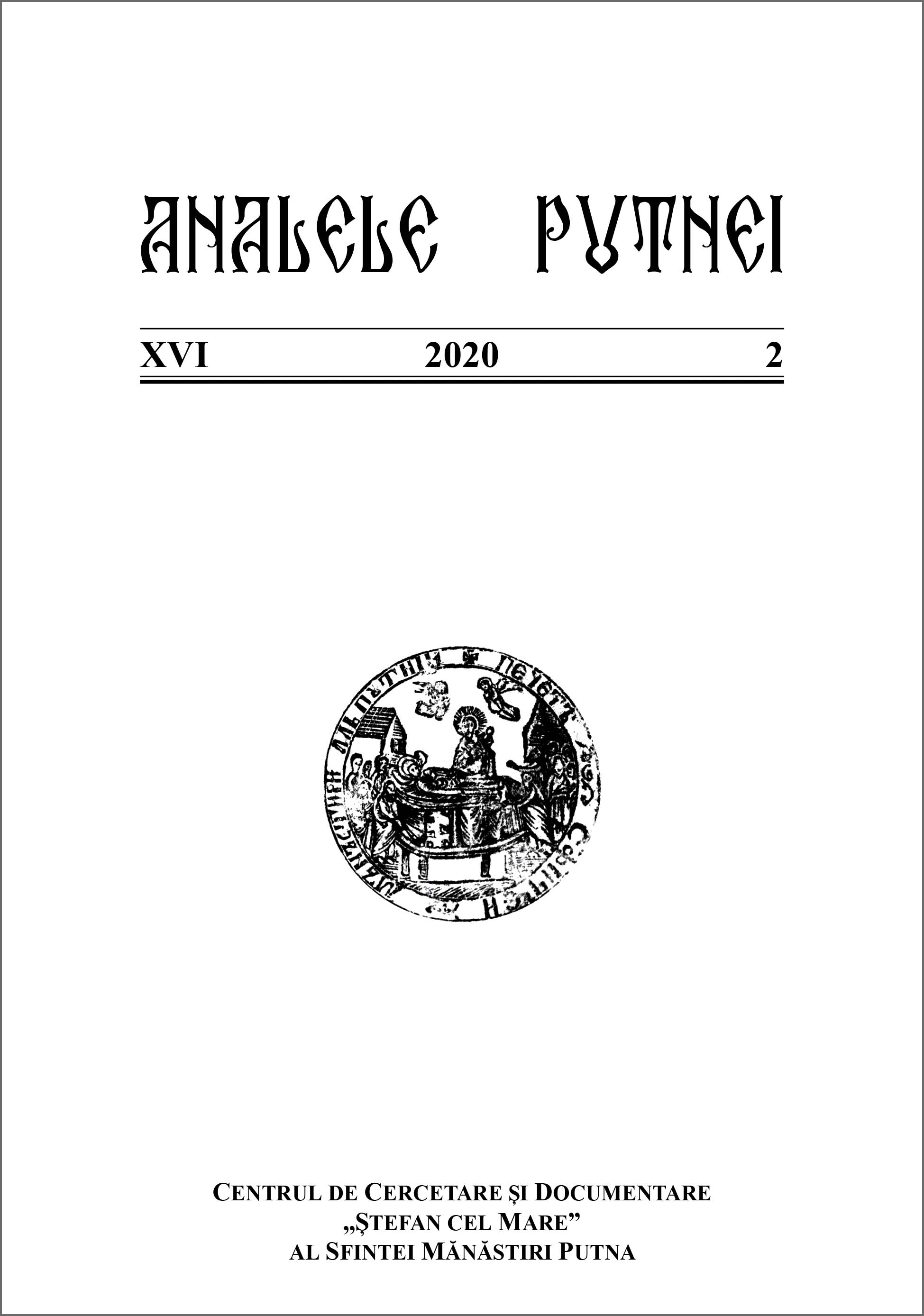Frescele de la biserica Sf. Gheorghe din Hârlău și cea de-a doua fază a picturii murale din Moldova lui Ștefan cel Mare
The Frescoes of the “St. George” Church in Hârlău and the Second Phase of Wall Painting in Moldavia during Stephen the Great
Author(s): Emil DragnevSubject(s): History, Local History / Microhistory, Middle Ages, 15th Century, Eastern Orthodoxy
Published by: Centrul de cercetare şi documentare ŞTEFAN CEL MARE
Keywords: Hârlău church; iconographic program; Passion of Jesus; votive portraits; Moldavian wall painting; Stephen the Great;
Summary/Abstract: Moldavian wall painting during Stephen the Great’s reign can be divided into two periods. The first one lasted approximately from 1488 to 1493 and the second lasted approximately from 1494/1495 to the beginning of the 16th century. In the votive portrait surviving the partial demolition of the wall between the nave and the narthex of the “St George” Church in Hârlău, Maria Voikitsa, Stephen the Great’s wife, and one of their daughters were identified. This article proves the dating of this church painting is 2–3 years after its construction in 1492. After a comparative analysis of the Passion cycle at the three 16th-century churches of the princely residences in the cities of Hârlău, Dorohoi, and Popăuți, the church built at Logothete John Teutu’s manor revealed many similarities in location, composition and the iconographic content of the Passion cycle. Several iconographic elements and characters in the murals of the church in Hârlău seem to be closely related to certain Italian paintings of Trecento and Quattrocento, while the masters of the frescoes in Dorohoi, Botoșani, and Bălinești largely follow the pattern of the church in Hârlău – the latter two in a simplified form. It should also be noted that there is a significant connection between the frescoes of the churches in Hârlău and Dorohoi with the so-called “Kastorian school”, especially with the murals of the masters of this school in Poganovo monastery (Serbia). Thus, in our opinion, the painting of the church in Hârlău must be considered the first one of the second phase of wall painting during Stephen the Great’s reign, followed by Dorohoi (after 1495), Botoșani (after 1496), and Bălinești (c. 1500), possibly even later by Arbore (after 1503), which will be the subject of a special research. According to the Anonymous Moldavian Chronicle, after the victory over the Polish army in the Kosmin forest in 1497, Stephen the Great called his army at Hârlău to celebrate the victory. The reason for choosing Hârlău as a place of celebration is unknown. It may be that the residence in Hârlău already had a Church dedicated to St. George which was painted not only on the inside, but also on the outside. Some photographs from 1897 prove this. The 20th century historians embraced the idea that the exterior frescoes were just as old as the interior ones, that is from the reign of Peter Rareș (1527–1538, 1541–1546), since everyone accepted the origin of the outer paintings to be exactly in the same timeframe, in accordance with the ideological imperatives of the time as they were presented to modern researchers. It is more suitable to approach the exterior paintings from a functional point of view. They are perfect for corporate prayers with large gatherings of people like the one held on December 6, 1497, in Hârlău, when the people could not fit inside the church. The iconographic programme of the outside murals, partially identifiable from old photographs, and the presence of the Prayer of All Saints painted on three apses must be taken into account as the latter is definitely a résumé of the iconographic programme from inside the church and a externalization of the iconostasis. In consequence, the exterior murals fully serve the purpose of expanding the prayer space.
Journal: Analele Putnei
- Issue Year: 2020
- Issue No: 2
- Page Range: 165-206
- Page Count: 42
- Language: Romanian
- Content File-PDF

